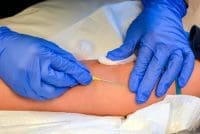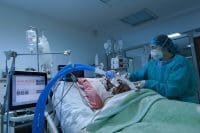In our efforts to discourage caregivers from manually lifting patients, it would seem logical to assume that the more patient-lift devices made available for staff to use, the more likely staff are to use patient-lift equipment. Although conventional wisdom would seem to support such logic, my experience suggests that it doesn’t work that way. Instead, staff become confused when they have too many devices to choose from.
The impression that an abundance of equipment is needed to address routine patient-lift challenges is an overreach that often leads to a lack of equipment utilization. In most cases, too many devices lead to the law of diminishing returns phenomenon; ultimately staff decide not to use any. A better strategy is to thoughtfully assess what is needed.
Develop a procurement process
Developing a standardized process for procuring patient-lift equipment is important for ensuring that the appropriate patient-lift equipment is purchased, while avoiding wasteful spending (therphawkinsgroup.com/services/procurement-optimization/). The first step in this process should be to understand the immediate patient-handling needs of the clinical environment for which equipment is being purchased. This is best achieved by performing ergonomic assessments in patient care areas. The assessment should include considerations for what patient-lift device could be used as a suitable substitute for an otherwise manual patient-lift task.
It’s important to understand that ergonomics for safe patient handling represents a particular emphasis placed on modifying the skilled practice of clinical professionals for the purposes of making those practices and processes safer. This is in opposition to ergonomics’ traditional focus on workspace modifications. Nevertheless, the level of emphasis placed towards equipment procurement is essential for streamlining the mechanisms for which patient-lift devices are brought into an organization. It represents a systematic process allowing for the organization to control the quantity and types of patient-lift devices made available for staff usage.
True cost of ownership
There are many patient-lift devices on the market capable of performing as marketed and advertised. Coordinators must learn to decipher the abundance of equipment options to make decisions that will not only accomplish the necessary patient-handling task, but also conform to standards set forth by governing agencies such as The Joint Commission and OSHA.
Whereas considering the needs of the patient care environment is the initial concern when addressing patient-handling challenges, choosing equipment that integrates into an organization’s ancillary support and logistical processes is also significant for maintaining utilization of the devices long-term. Limiting the number of equipment purchases to no more than two patient-lift manufacturers per facility will also better enable ancillary departments to provide sufficient support for patient-lift accessories such as “slings”.
Factors to consider for these types of capital equipment investments include installation, maintenance, and distribution, which are all essential for maximizing returns on investments. When the true cost of equipment ownership is determined in the initial phases of the procurement process, organizations are better able to manage and control resources allocated towards equipment budgets. Additionally, coordinators become better equipped to provide practical justifications to staff for why some equipment devices are more suitable than others in meeting patient care requirements within the hospital organization. Understanding the true cost of ownership allows all stakeholders in the organization to have an idea of the standards that are applied to purchasing patient-lift equipment. The process is more advanced than simply liking a particular product and assuming that it will automatically integrate into the organizations’ existing processes.
Managing time spent with equipment vendors
Being prepared is the most effective way to prevent overspending patient-lift equipment budgets. After performing the necessary research and gaining an understanding for patient-lift equipment needs throughout the facility, most coordinators at this point are prepared to shop for patient-lift devices that represent the best value for their facilities.
The equipment search usually begins by calling on the very patient-lift vendors or salesmen who persisted on demonstrating their products long before the coordinator had a sufficient understanding of needs. One of the principles that I strongly emphasize to new coordinators who seek my advice is to limit time spent with equipment vendors. A simple rule to apply is: the more time you spend with salesmen, the more likely you are to make a purchase. Whether the purchase be something of value or a product that will never be used, coordinators should approach salesmen with the level of confidence needed to make both targeted and focused purchase decisions. This is also why a procurement plan should be established amongst administrators, management, and staff so that a process is developed for directing patient-lift vendors to the safe patient handling coordinator, opposed to anyone in the organization who will listen. This will help the organization to avoid purchasing too many or unnecessary patient-lift devices.
Effectiveness of safe patient handling coordinator
Safe patient handling is a one-of-a-kind program where for the first time, clinical practice or patient-care combines with an administrative function that specifically focuses on providing assistive technology to protect the caregivers responsible for providing patient-care. Its uniqueness suggests that leaders of this program should not only possess bedside nursing expertise, but also an advanced administrative knowledge for wide-scale capital equipment purchasing. One of the challenges in performing this role is understanding the fine balance which exists between appeasing clinical staff and making purchasing decisions which serves in the best interest of the organization. A safe patient handling coordinator must learn to do both to achieve successful injury prevention outcomes while avoiding underproduction created through unnecessary spending.
Roric P. Hawkins is the founder and president of The RP Hawkins Group (www.therphawkinsgroup.com) and is the safe patient handling coordinator at Michael E. DeBakey VAMC in Houston, TX. The views expressed here are his own.


















